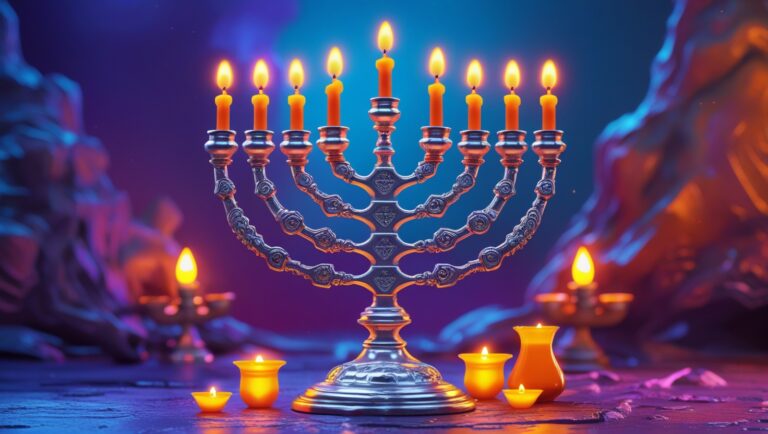Rav Chaim Vital writes in Shaarei Kedusha that a person needs to realize that his entire life is only a preparation for the Olam HaBah (World to Come), which is essentially the goal of spiritual elevation
The level a person will attain in Olam HaBah depends on many factors, not only whether he studied Torah or fulfilled the Mitzvot. For example, there is the Avodat HaMiddot, how wise he became in life, how much Tzedaka he gave, what his challenges were, and so on.
These all, plus the very soul root of a person will define where his standing will be. And I think it goes without saying that it’s impossible for two people to ever have the same level since we are all so different.
But the main thing, writes the Zohar, is Yir’at Shamayim (fear of Heaven). This is the most fundamental aspect of Avodat Hashem, without which there’s no connection between a person and Hashem. Interestingly, this is the Sephira of Malkhut, which is basically “receiving the Yoke of Heaven. All our Avodat Hashem depends on it, because it gives purpose to what we do.
Spiritual Wisdom (Sephira of Chokhmah) and Yir’at Shamayim
In Kohelet (Ecclesiastes 7:23), we find the famous Pasuk:
כׇל־זֹ֖ה נִסִּ֣יתִי בַֽחכְמָ֑ה אָמַ֣רְתִּי אֶחְכָּ֔מָה וְהִ֖יא רְחוֹקָ֥ה מִמֶּֽנִּי׃
Translation: All this I tried [regarding] wisdom, I told myself [I shall become] wise, but it is far from me.
According to the Zohar, every time we find the root קדש (Kodesh, holiness), this is a reference to the Sephira of Chokhmah. There are many instances when we find this such as when mentioning Kedusha, Kaddish, Kiddushin, Kodesh, Kiddush, Mikdash, MeKudash (when sanctifying the New Moon), and so on.
Chokhmah (true wisdom), is a very elusive state of consciousness in which one sees everything united and working together, but which can also easily flutter away. When there is Chokhmah, all the Sitra Achra runs away, and this is why the Zivug of Talmidei Chakhamim is from Leil Shabbat to Leil Shabbat.
The reason is that when we receive Shabbat, we receive a special illumination of Chokhmah, which drives away all the spiritual opposition.
In Tehilim 111:10 we find the famous Pasuk:
רֵאשִׁ֤ית חכְמָה ׀ יִרְאַ֬ת יְהֹוָ֗ה
שֵׂ֣כֶל ט֭וֹב לְכׇל־עֹֽשֵׂיהֶ֑ם
תְּ֝הִלָּת֗וֹ עֹמֶ֥דֶת לָעַֽד׃
The first line reads: The beginning of Wisdom is the Fear of Heaven. Yir’at Shamayim brings a person to true wisdom. This powerful force drives the Sitra Achra away so that it cannot attach itself to the light.
It’s interesting that Chokhmah (wisdom) is the most difficult type of Mokhin to bring.
- In any system we generally already have Binah
- Chokhmah comes with difficulty
- Keter comes from Hashem as a gift after all the work
But Chokhmah is also a state of mind, in which we apprehend things silently. It’s instant and we can see all the parts of the system working together. Consider hearing a description (Binah) of a red car as opposed to actually seeing a red car (Chokhmah). No matter how much a person describes us the red car, it will never be as valuable as actually seeing it.
Spiritual elevation is tied to Olam HaBah
I’m not so fond of using the expression “spiritual elevation” because it doesn’t sound very Jewish, but I will try to find support that it’s the closest term we can come to a person’s standing in Avodat Hashem.
If we could break down what causes a person to sin, besides of course the “spirit of foolishness” a person receives (Talmud Sotah), the root of it is the fact that he essentially wants to enjoy this world, as Rebbe Nachman and Rebbe Natan elaborate. If we think about it, people don’t sin unless they stand to gain something, right now. While this something is in direct opposition to what Hashem wants, there is something he craves here and now.
The degree to which a person enjoys this world is then inversely proportional to how much he is connected to the Olam HaBah. One who has no desire for this world is necessarily connected, and expects more anxiously, the next world. And vice-versa.
Wisdom in Yichudim and Kavanot from Kabbalah
There are many Yichudim for bringing wisdom to a person’s mind. But I want to bring your attention to the Kavanot of the Amidah.
In the Kavanot of the Amidah, each of the four bowings are meant to bring a specific aspect of the Mokhin (divine consciousness) to the Partzufim of Zeir Anpin and Nukvah. As we know, the Mokhin are divided into 4:
- Chokhmah
- Binah
- Chassadim of Da’at
- Gevurot of Da’at
The last 3 of the list are brought normally. The one that is most problematic is the first one (Chokhmah). This is because Chokhmah doesn’t come in one go, and “leaves” the Partzuf immediately. So, we bring only the Akhoraim (back part) of Chokhmah in the first bowing, and it leaves. Then we bring part of it (Chokhmah, Chessed and Netzach of Chokhmah) in the second bowing (of Binah), and the rest (Binah, Gevurah, Hod + Da’at, Tiferet and Yesod of Chokhmah) throughout the blessings of the Amidah.
In a sense, this is paralleling what King Solomon said that Chokhmah is far away. In fact, our normal state of consciousness is that of Binah. Keter is received as a gift from Hashem once we complete the divine system.
The Torah is infinitely deep, but we of course are not talking about the Pshat. The Pshat is deep but since it pertains to a physical world, then it perforce is finite. For example, we have about 13.550 halachot in the Shulchan Aruch. While that sounds a lot, it is necessarily attached to the physical world.
It’s difficult for us to imagine, but consider that when a person went to the Holy Temple, he’d “download” thousands, if not millions, if not billions, of Torah insights depending on his level. As I explained in a different article, most of us only perceive the Nefesh. The Ruach is on an entirely different level of existence; for it, the Nefesh’s thoughts are hardly considered “rational. The Neshama is on an otherworldly transcendental level, which we cannot begin to imagine to comprehend.
Final Thoughts
As you should be familiar by now, “wisdom” is the Sephirah of Chokhmah. It is related to the non-verbal mode of thinking and also the trance state when we apprehend things silently and instantly.
This is the type of Torah that we will learn in Olam HaBah, as every level above our present capacity could be considered Chokhmah/silence/vision.
There is however some advice to grasping this elusive state, which comes with experience:
- Meditate and try to silence the mind as much as you can.
- Take deep breaths on a constant basis, and from the bottom part of the belly (using the diaphragm)
- Be happy as it calms you down and also silences the mind (Remember happiness is a state of mind and a means, not an end).
- Keep the name of Hashem in front of you as much as possible
- Sleep properly, as without it, the mind cannot work and random thoughts flood it
- Try to think and see things in a non-verbal way, that is, without forming words in your mind
You are also welcome to come to my new free webinar “Sparks of Light” which will start the 27th of August, Sunday!







